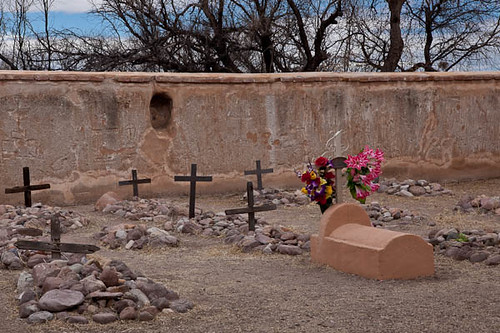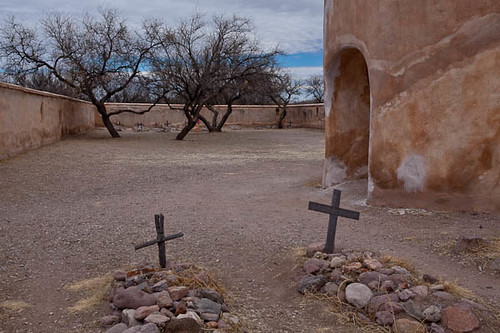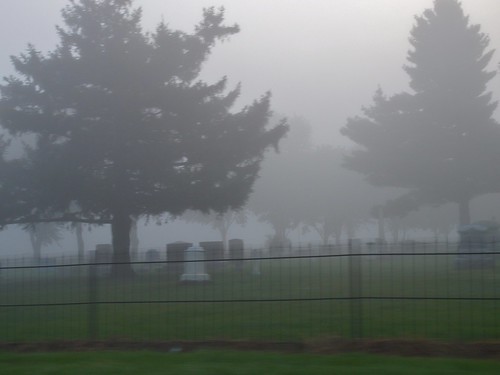This is the larger section of the Tumacacori Cemetery. There are a dozen early 20th century graves that are marked with piles of heavy rocks and rustic, wooden crosses. Any evidence of mission era graves are no longer visible, most likely destroyed by weather and human activity in the area. In the late 1800s, the mission was used as a corral during cattle drives. But by 1900, the people moving into the area recognized this as “sacred ground” or “campo santa” and petitioned to once again use the cemetery to bury their dead.
The grave of one year-old Juanita T. Alegria (1915-1916) was the last person to be buried in the cemetery of the Tumacácori mission. Her grave, marked by the above ground adobe tomb, is the only one to be identified in the back section. According to the Park Ranger, her family still comes to maintain the grave and decorate it with flowers.
The cemetery and Mortuary Chapel are located at the rear of the church. The Chapel is about 16 feet in diameter and has a flat roof, though there were indications that is was originally intended to have a white dome similar to the dome on the church. This is where funeral masses were celebrated and rosaries were prayed for the dead.
One of the main reasons fro the outside chapel was the concern for the spread of illness. Many died from contracting Old World illnesses, usually small pox or measles, and to gather people in an enclosed area such as the larger church would have run the rick of more contagion. At the height of the mission, there were often one or two deaths every day.
This is the last entry for Tumacacori, although the entire series of photographs of Tumacacori National Historic Park are available in a Flickr set.
———————————
Bo Mackison is a photographer and owner of Seeded Earth Studio LLC. She is living in Tucson for two months, exhibiting her photography in art shows, taking photographs of Arizona landmarks, both historical and natural, and blogging about photography, art fairs, and living life “solo”. It is an experience well worth the effort.










